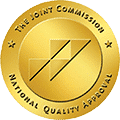Bipolar disorder, a type of mental illness that causes severe psychological instability, is characterized by extreme changes in mood and energy patterns.. Anxiety disorders, obsessive compulsive disorder, impulse control issues, eating disorders, cardiovascular and respiratory illnesses, and sleep apnea are among the most common co-occurring disorders in bipolar disorder. Comorbid bipolar illness and substance use disorder are not only difficult to manage, but they also raise the risk of chronic infections, harm, and suicide in patients.
Bipolar disorder produces severe changes in:
Depending on the type of bipolar disease and the intensity of their episodes, people with bipolar disorder can go from depressed to manic in a matter of weeks or even days. Bipolar disorder has a wide range of consequences, including relationship problems, occupational challenges, a higher risk of suicide, and a general reduction in quality of life.
So, how does this comorbidity occur? Drug abuse leads to physical alterations in the brain. The most noticeable change is in the brain’s reward system, which makes drug use enjoyable. Changes in the reward system of the brain, on the other hand, contribute to obsessive and drug-seeking behavior. Other regions of the brain that regulate mood and behavior can be rewired by drugs. Drug use and abuse can trigger brain abnormalities that contribute to bipolar illness.
The following are some of the most common variations of this condition:
Bipolar disorder is difficult to diagnose, particularly in persons who use drugs or alcohol. The dramatic mood fluctuations that this psychiatric disease causes can be similar to the highs and lows that people experience when they are intoxicated or withdrawing from narcotics. Substance misuse, on the other hand, can amplify the highs and lows of bipolar disorder, making it difficult to distinguish whether the mood swings are chemically or mentally driven.
There are two telltale signs of bipolar disorder: depressive and manic symptoms:
Tragically, in any given year, half of those diagnosed with bipolar disorder go untreated. Even though there is no cure for bipolar disorder, the best treatment approach includes a mixture of medication and cognitive-behavioral therapy.
Bipolar disorder and addiction can both benefit from medication. Medication for addiction treatment reduces cravings and alleviates withdrawal symptoms. The sort of addiction medication provided is determined on the drug of abuse used by the patient.
Medications for bipolar disorder might help a person’s mood swings and bring them back into balance. Among the drugs used to treat bipolar disorder are:
Every one of these drugs can be utilized to treat either a manic or depressive phase. Because Benzodiazepines are addictive, healthcare professionals may be hesitant to prescribe them without a thorough diagnosis. There are also holistic treatment methods for bipolar disorder.
Cognitive Behavioral Therapy (CBT) is a type of therapy that addicts with co-occurring bipolar disorder can benefit from its application. CBT addresses the ideas and sensations that these people experience in a systematic way.
Addicts with bipolar disorder might have a better understanding of their activities by evaluating the emotions and opinions that drive them to manic and depressive behaviors. CBT prepares individuals for cravings and episodes, allowing them to better manage their behavior.
CBT is one of the most widely used therapies in addiction medicine, with counselors using it to treat a variety of addictions. Cognitive behavioral therapy aims to teach people how to reduce the harmful behaviors that come with substance abuse. CBT emphasizes anticipating harmful events and employing coping skills like avoidance or self-control to avoid recurrence.
If you, or a loved one are struggling with a substance disorder or mental health issue, please call us. Our trained professionals can walk you through an assessment to fully understand your needs.
Get confidential help 24/7. Call now for:
Related Articles
Get Help Now
Medical Advice Disclaimer
Magnified Health Systems aims to improve the quality of life for people struggling with substance use or mental health disorder with fact-based content about the nature of behavioral health conditions, treatment options and their related outcomes. We publish material that is researched, cited, edited and reviewed by licensed medical professionals. The information we provide is not intended to be a substitute for professional medical advice, diagnosis or treatment. It should not be used in place of the advice of your physician or other qualified healthcare providers.

Dr. Bickley graduated from U.C. Irvine with honors: Phi Beta Kappa, Golden Key International Honor Society, Cum Laude. He has been featured on national radio and print media. He is also a frequent lecturer at National Conferences. He holds an A.S. degree in Drug & Alcohol Studies, and two B.A. degrees in Criminology & Psychology, and masters and doctoral degree in Clinical Psychology. He is a licensed California Drug & Alcohol Counselor Level II, a licensed Clinical Supervisor and is certified in treating Eating Disorders.
Call Us Now, Our Admissions Team Is Standing By And Available 24/7.

Head Office Location:
1530 N Federal Hwy Lake Worth, FL 33460
Contact & Feedback:

We are here for you.
We are here for you, Call us and get started!
